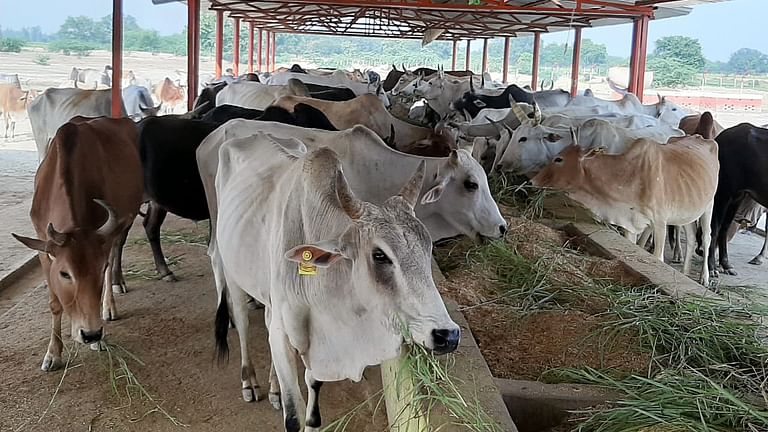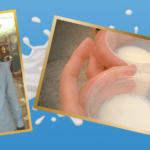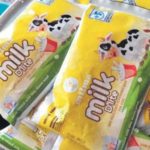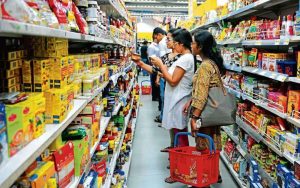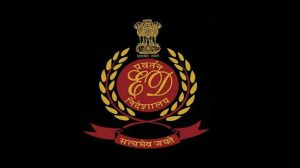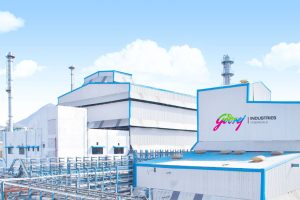
With the emerging units, startups and government-sponsored schemes, the dairy sector in Jammu and Kashmir is thriving.
According to experts, livestock is emerging as an important sector in the economy of Jammu and Kashmir and plays an important role in the socio-economic development of Jammu and Kashmir. They say in Jammu and Kashmir about 80 percent of the population lives in the rural areas and about 60 per cent of the revenue is generated by the agriculture and animal husbandry sector. They say that dairying has a potential source of additional income for the rural people of Jammu and Kashmir.
“The contribution of the dairying sector to the national income is invaluable. This sector helps in increasing the crop production by providing the drag power, organic manure and cash income on a regular basis,” said the experts.
Principal Secretary, Animal and Sheep Husbandry departments, Navin Choudhary said that the dairy sector was a catalyst for boosting agri-economy. He informed that in Jammu and Kashmir thousands of farmers and budding entrepreneurs have been hugely benefited from the dairy farming and we are encouraging more youth to join the sector,” he said, adding “South Kashmir produces milk in bulk.”
Director, Department of Animal Husbandry, Kashmir, Purnima Mittal, told Greater Kashmir that the white revolution was gaining momentum across India and the Jammu and Kashmir government is taking all possible measures to keep the pace.
“Jammu and Kashmir is producing 70 lakh litres of milk per day, also strengthening the public private partnerships, besides this Kashmir alone is producing 40 lakh litres of milk per day,” she said.
She said that the Jammu and Kashmir Government with the help of farmers and dairy units was successful in producing 70 lakh litres of milk per day. She said Kashmir alone produces 40 lakh while Jammu produces 30 lakh litres, respectively.
“White revolution is becoming popular and we are also marching on the path. We are doing our best to achieve the target and rope in thousands of successful farmers across Jammu and Kashmir,”
“This sector is climatically viable. Kashmir is producing 40 lakh litres per day and we are aiming to go high.”
‘Demand for Milk’
While demand for dairy produce in other states is growing, the price of milk across Jammu and Kashmir is also picking up. “There have been a lot of challenges in this sector. We are working out on all the modalities and trying to prepare a roadmap to help the dairy farmers and others associated with this sector,” the director informed.
As per the 20th Livestock Census conducted in 2019, Jammu and Kash¬mir has a livestock population of 82 lakh. The Milk Production as per ISS data 2018-19 is 2541 TMT. “For improving milk production and productivity in Jammu and Kashmir, the Department is looking at various interventions including genetic up-gradation of Cattle, Cattle Induction, Fodder Development, Milk Procurement and Processing and Health Cover and Risk Management.”
Earlier the secretary informed that the Department of Animal Husbandry and Dairying, Government of India has agreed to distribute 15000 Dairy Units of two cows each as a special package for Jammu and Kashmir under the Dairy Entrepreneurship Development Scheme (DEDS) as a beneficiary oriented scheme financed by National Bank for Agriculture and Rural Development (NABARD) through commercial banks.
‘Making of Cooperatives’
The officials informed that in order to make milk production profitable for farmers, there was a need for establishing Cooperatives to supply it directly to consumers. “It is easy to produce milk in Kashmir’s green land, but very difficult to find a market. We are working out all the modalities to find a suitable market for the farmers and dairy unit holders,” they said. The dairy-farming has a potential to generate jobs for thousands of unemployed youth in Jammu and Kashmir. “Government’s priority is to promote local milk-processing units.”
Officials said that the Milk Production Expansion Plan proposal of the Jammu and Kashmir Milk Producers Cooperative Limited (JKMPCL) for raising capacity of JKMPCL from 50,000 LPD of milk production to 2.5 Lakh LPD in the next three years was also discussed during the meeting.
He said that Jammu and Kashmir Government was focused to review the poultry and dairy sector, informing that the modalities for baseline survey by the National Dairy Development Board (NDDB) and implementation of the Special Package for dairy development projects have been recently reviewed threadbare.
‘Schemes of Sustenance’
The Director said that several central and state-sponsored schemes have been launched to help and uplift the marginalised farmers. She said that the Integrated Dairy Development Scheme has been launched—which has hugely benefited the farmers. She said regarding beneficiaries, who are availing 5 to 50 cows unit can also avail several benefits from the government-run schemes.
“There is a lot of value addition done in this regard as far as the milking machine, Milk ATMs are concerned and the farmers are getting viable subsidies on this,” she said, adding “We have 476 single five cow units in Kashmir.”
‘Pets and Pandemic’
Noted Pet Specialist, central veterinary hospital, Srinagar, Dr Qazi Mudasir, told Greater Kashmir that there was a greater role of livestock in booming the economy of Kashmir region. He said that Pets played a life-saving role during COVID-19 pandemic. He asked farmers to vaccinate their cows and other livestock to prevent a wide range of diseases that cause reduced production, fertility or death in cattle. “Timely vaccines can protect cattle against several life threatening reproductive and respiratory diseases and during Pandemic one has to be extra vigilant about their health as well.”
He urged farmers to always follow the vaccine label directions to ensure the vaccination program is effective.
Pertinently, in the first wave of the Covid-19 pandemic, agriculture and allied sectors put up a spectacular performance with an annual growth of 3.4 per cent while the economy contracted by (-) 7.2 per cent in 2020-21. According to reports, in the farm-dependent population comprising cultivators and agricultural labourers, those involved in dairying and livestock constitute 70 million.
In the Gross Value Added (GVA) from agriculture, the livestock sector contributed 28 per cent in 2019-20. A growth rate of 6 per cent per annum in milk production provides a great support to farmers, especially during drought and flood. Milk production rises during crop failures due to natural calamities because farmers bank more on animal husbandry then. However, given the nature of production and sale of milk in India, milk producers are highly susceptible to even minor shocks as the demand for milk and milk products are sensitive to changes in the employment and income of consumers.
The second wave of pandemic has thrown the milk producers from the frying pan to fire. Unlike sugarcane, wheat, and rice-producing farmers, cattle raisers are unorganised and do not have the political clout to advocate for their rights. Though the value of milk produced outweighs the combined value of the output of wheat and rice in India, there is no official and periodical estimate of the cost of production and Minimum Support Price for milk. The CACP performs annually for 24 major agricultural commodities in the country including wheat and rice.
According to the report, the dairy farmers need the following to continue their vocation: One, a stable market and remunerative price (ignoring fat content or giving more weightage to the quantity of milk) for liquid milk; two, uninterrupted supply of fodder and cattle feed at a reasonable price; and three, regular supply of veterinary services and medicines.
A media professional turned entrepreneur, Tawhid Ahmad Dar told Greater Kashmir government must do more to help as dairy farmers need a stable market and better pricing for liquid milk, affordable, uninterrupted supply of feed and reliable veterinary services.
